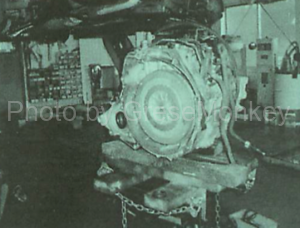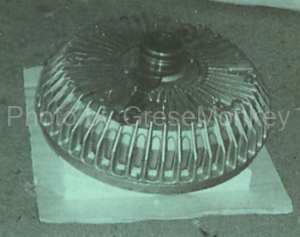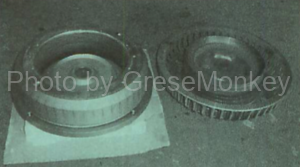1998 model Nissan Cube model: GF-Z10 mileage: 70,000km

Noise when starting
This is a warehousing for vehicle inspection and maintenance. Among the user’s requests, there were a request for repairs saying “There is a cueing noise when starting,” and “It is difficult to enter the shift lever.”
When the engine is started and the shift is operated, the clutch becomes a symptom similar to the “half-clutch state” and is not completely disengaged, but when the engine is stopped, each range seems to enter easily.
This car is an N-CVT system and employs an electromagnetic clutch, but when it enters the D range, it is only a few meters away, but an unusual noise called “cue” is generated. However, the noise is only at the time of departure, and no abnormal noise during traveling can be confirmed.
Inspection of control system
From the above diagnosis, it is suspected that “the electromagnetic clutch has failed”, but the control system is inspected just in case. To cut off the power to the N-CVT, disconnect the brush holder connector and start the engine with the current cut. The shift lever is operated in this state, but it is still hard and the clutch is not completely disengaged.
Then, after removing the connector of the brush holder, attaching the check lamp terminal to the connector and operating the lever, it turned off in the N range and dimly lit in the D or R range. It can be predicted that when N-CVT shifts to the D or R range, a weak current will be applied in an attempt to create a creep phenomenon. From these inspections, it is judged that there is no problem in the control system of the N-CVT, and the repair of the electromagnetic clutch is started, but the repair is probably an electromagnetic clutch assembly replacement.
Electromagnetic clutch replacement

What is expected is that if the “electromagnetic clutch repair fee” becomes high, there is a possibility of “transfer” in combination with the inspection cost. If the repair is performed, the user’s consent is required. However, even though the estimated amount of electromagnetic clutch was ¥ 108,000. Since the user requested “Please fix it!”, We started repairing.
Since it was the first time to replace the electromagnetic clutch, I tried to gather information by contacting the manufacturer’s dealer, but “I have never replaced the electromagnetic clutch until now” It was only a poor response. Well, if you haven’t repaired it, it would be useless to ask, but for the time being, I asked AT’s rebuild company whether it was rebuilding, but it seems that the electromagnetic clutch has not been rebuilt.
I decided that I wouldn’t have a decent person even with second-hand parts if I couldn’t help using an electromagnetic clutch that would break at a mileage of 70,000km.
Clearing work
The procedure for exchanging the electromagnetic clutch is the same as that for the torque converter AT. First, detach the clutch assembly from the drive plate and lower it with the clutch attached to the main unit.
Next, it is the work to remove the electromagnetic clutch from the mission, but if it is a torque converter, it should be released, but this electromagnetic clutch is rusted, it does not come off easily, and when I thought that it was removed somehow, the shaft for the oil pump came out together . Since this shaft is reused, it must be removed from the broken electromagnetic clutch.

Since it is rusted, it takes about 30 minutes to fight while blowing CRC and giving vibration with a hammer. Since it finally came out, I restored it with a new clutch.
Confirmation work after replacement and investigation of the cause
After the replacement, we entered confirmation work immediately, but when I started the engine and shifted to the D range, there was no noise even when I started running, and neither shifting nor restarting from the signal waited. The acceleration was smooth, the creep was clear, and the ride was pretty good.
After inspection and delivery, when the disassembled electromagnetic clutch was disassembled, foreign matter (clutch powder?) Was stuck to the inner surface of the coil on the brake drum, and it should have been a smooth inner surface. It was.
If this roughness is polished with sandpaper and a new clutch powder is added, it seems to be resolved if the clutch is broken.

Even if the torque converter type generates heat in a stalled state, the ATF circulates so that the generated heat can be dissipated to the outside, but this CVT controls the current by duty control and creates a half-clutch state, so that However, the heat generated by the electromagnetic clutch may be lost without being dissipated, and the clutch may be overloaded.